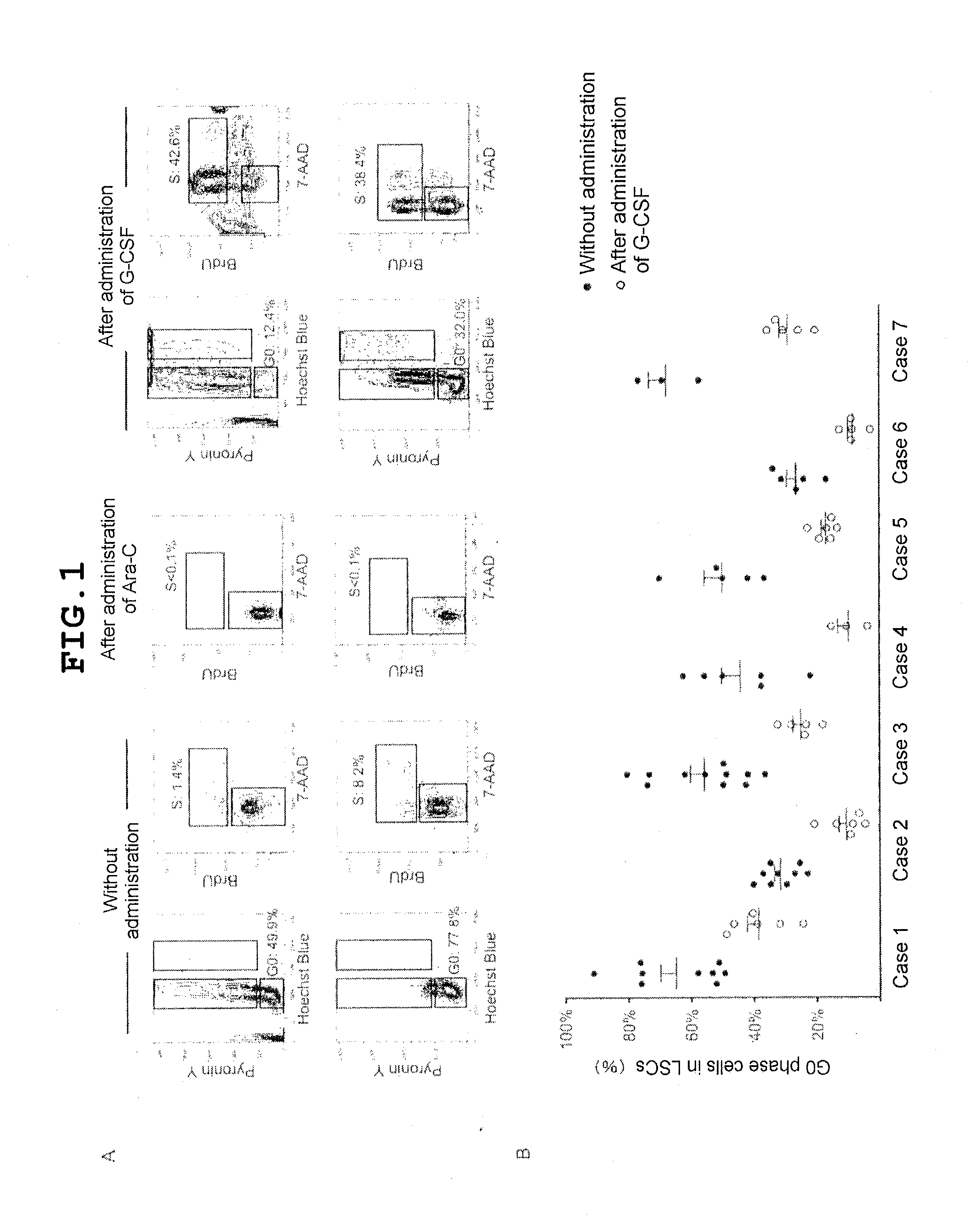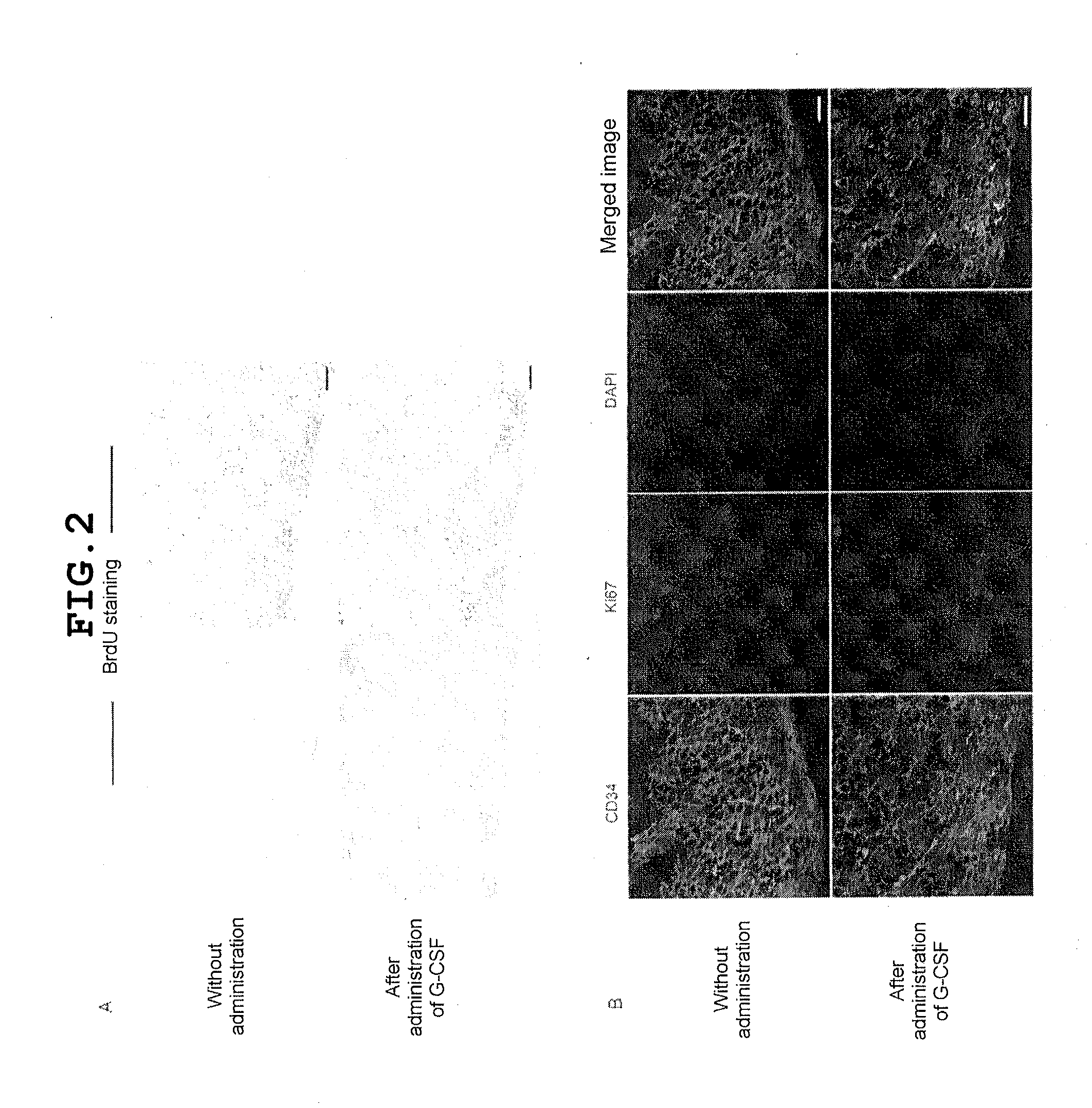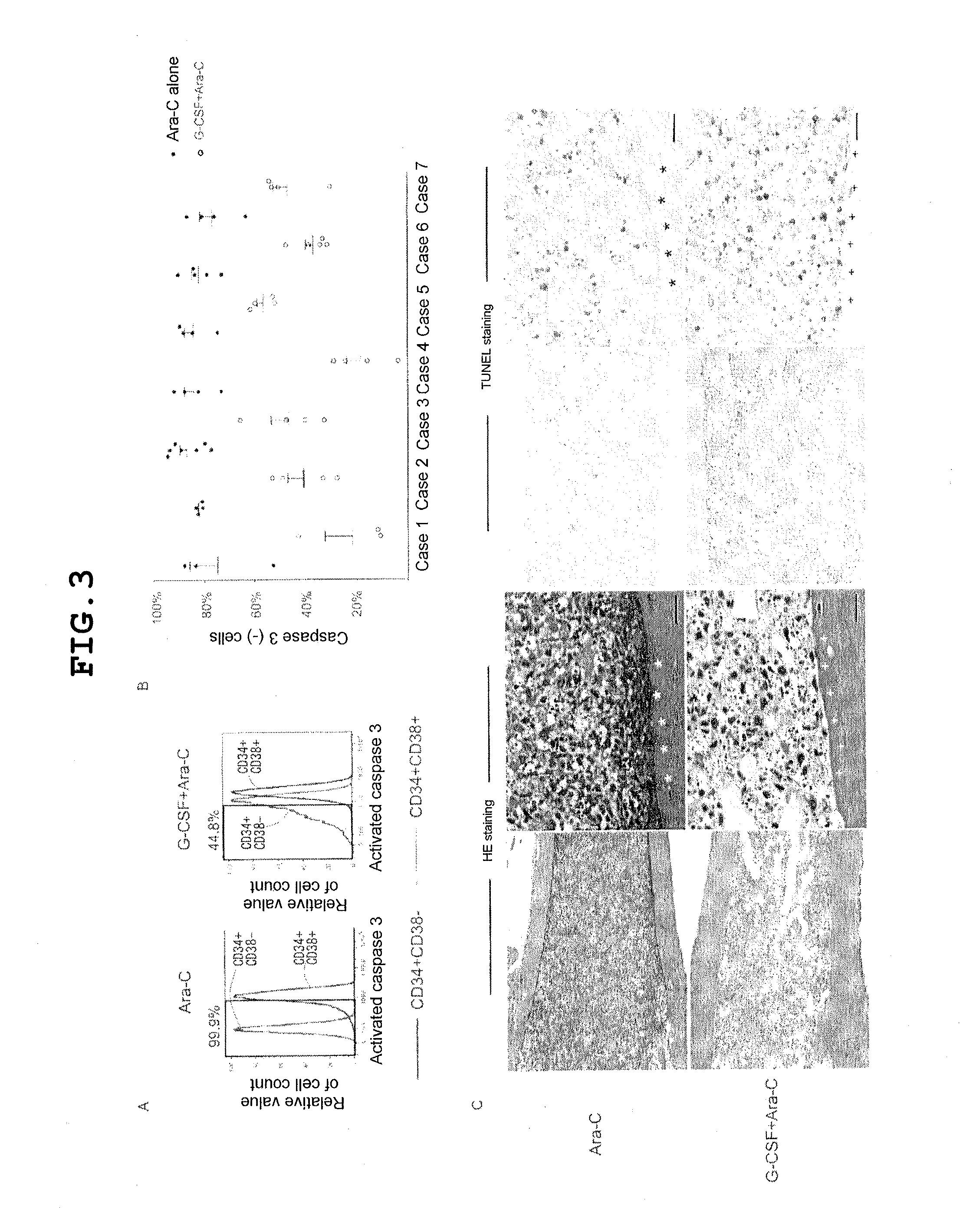Agent for preventing recurrence of leukemia
a technology for preventing recurrence and leukemia, which is applied in the direction of antineoplastic agents, drug compositions, peptide/protein ingredients, etc., can solve the problems of being unable to rescue patients, and conventional chemotherapeutic agents have been posing the difficult problem of being able to kill patients, so as to suppress and prevent leukemia recurrence, kill leukemia stem cells at high efficiency
- Summary
- Abstract
- Description
- Claims
- Application Information
AI Technical Summary
Benefits of technology
Problems solved by technology
Method used
Image
Examples
example 1
[0116]First analyzed was the status of the progression of the cell cycle of LSCs and leukemia non-stem cells in the BM of NOD / SCID / IL2rgnull recipients of transplantation of LSCs obtained from the BM of seven AML patients. Although case-dependent variation existed, the ratios of cells in the G0 phase and those in the G1 phase were significantly higher in LSCs than in non-stem cells (hCD34+CD38+) in the BM of the recipients (Table 1).
TABLE 1The cell cycle progresses vigorously in AML non-stem cells, whereas the cell cycle has ceased in a largernumber of primary AML LSCswithin BMwithin BMCase IDnhCD34+CD38−hCD34+CD38+p19% G064.8 + / − 5.120.3 + / − 3.98% G0 / G184.6 + / − 1.455.8 + / − 7.58% S 8.4 + / − 1.626.9 + / − 6.98% G2 / M 2.5 + / − 0.712.6 + / − 3.229% G031.5 + / − 2.0 8.3 + / − 1.17% G0 / G186.1 + / − 4.052.7 + / − 5.17% S 8.6 + / − 3.123.8 + / − 3.17% G2 / M 2.2 + / − 0.619.9 + / − 5.2311% G055.8 + / − 4.420.4 + / − 4.013% G0 / G179.1 + / − 2.955.7 + / − 2.713% S12.3 + / − 2.323.0 + / − 2.113% G2 / M 3.3 + / − 0.617.3 + / − 2.246% G0...
example 2
[0120]The present inventors previously demonstrated that CD34+CD38− LSCs are present selectively in the endosteal region of BM, whereas CD38+ leukemia non-stem cells are detected mainly in the central region of BM. It is important that LSCs adjoining to the BM endosteum exhibit relatively high resistance to chemotherapy in vivo (F. Ishikawa et al., Nat. Biotechnol. 25, 1315 (2007)). Therefore, to directly evaluate the status of the progression of the cell cycle of LSCs in the BM endosteal niche, histological analysis was performed on recipients of primary transplantation of human AML (FIG. 2). In a constant state without administration of a drug such as G-CSF, leukemia cells in the central region of BM were strongly BrdU-positive; these cells exhibited high proliferation capability, whereas AML cells adjoining to the endosteum were found to be negative for BrdU staining; it was shown that these cells did not have a vigorous progression of the cell cycle (upper panel in FIG. 2A). In ...
example 3
[0121]Next, to demonstrate that the sensitivity of LSCs to chemotherapy increases with initiation of the progression of the cell cycle, an in vivo model for evaluating the effects of administration of Ara-C alone and administration of Ara-C following pre-administration of G-CSF on LSCs in recipients of primary transplantation of AML was developed. After administration of Ara-C alone or after administration of Ara-C following pre-administration of G-CSF, the BM of the recipients was evaluated in terms of 1) a flow cytometry fraction of activated caspase-3 positive LSCs undergoing apoptosis, 2) histological localization of cells undergoing apoptosis in the recipient BM as determined by TUNEL staining, 3) percentage and absolute number of remaining viable hCD34+ AML cells, and 4) frequency and AML-causing potential of remaining LSCs in alternative measurements of the likelihood of AML recurrence via limited dilution and sequential transplantation of sorted hCD34+ cells. As shown in FIG...
PUM
| Property | Measurement | Unit |
|---|---|---|
| Fraction | aaaaa | aaaaa |
| Fraction | aaaaa | aaaaa |
| Fraction | aaaaa | aaaaa |
Abstract
Description
Claims
Application Information
 Login to View More
Login to View More - R&D
- Intellectual Property
- Life Sciences
- Materials
- Tech Scout
- Unparalleled Data Quality
- Higher Quality Content
- 60% Fewer Hallucinations
Browse by: Latest US Patents, China's latest patents, Technical Efficacy Thesaurus, Application Domain, Technology Topic, Popular Technical Reports.
© 2025 PatSnap. All rights reserved.Legal|Privacy policy|Modern Slavery Act Transparency Statement|Sitemap|About US| Contact US: help@patsnap.com



